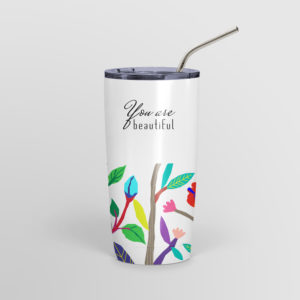
In the world of sublimation, pricing is a challenging subject. There is no simple solution but some simple rules will help you price for profit. Here, Andrea Evans, Sawgrass’ international marketing manager, explains all.
Each business has unique costs and operational characteristics to be taken into consideration and each market a different view on what constitutes a fair price. In reality, pricing has to be based more on the customers’ perception of value rather than costs and it’s a variable that cannot be easily calculated in a mathematical formula.
To start you need to know what it costs to actually produce a sublimated product in your own business. You have to look at your total operational costs and compare them against your production efficiency, to see what it really costs to deliver high quality products.
Daily running costs
First identify and calculate all of the projected costs for operating your business for one year. Some are fixed and some will change as your business grows. Put everything in a spreadsheet to be easily updated as your business changes. Remember to include your desired salary! The result is will the total estimated amount to pay all of your yearly bills.
This is the approximate annual cost of operation. Suppose that number was £60,000. What does that tell you? Pretty much nothing at all, so you need to break this number down into something that is easier to deal with.
Decide how many weeks per year you will operate. Consider 48, leaving four for holiday. Divide £60,000 by 48 to get £1,250, which is the weekly cost of operation. You need to bring in at least £1,250 each week, 48 weeks per year, to reach your yearly number. Dividing this number by five gives the daily figure of £250 and by eight gives £31.25 hourly. The cost per minute works out to £0.52.
You can now see realistically what it costs to run your business on a daily basis. This will make it easier to track the performance and understand what you need to generate to even just pay the bills.
Now you need to compare your operating costs against your ‘logical’ production capabilities to see what it really costs to generate sublimated images. For simplicity, assume that it takes 30 seconds to print, 30 seconds to prepare the substrate for pressing and 60 seconds to press the item. That works out to two minutes. In theory you have a maximum output potential of 30 pieces per hour.
If your hourly cost of operation is £31.25 and potential maximum production is 30 pieces per hour, then production cost per item is £1.04. That includes ink, paper, insurance, utilities and labour etc. The only thing it doesn’t include is the cost of the substrate and a markup.
Three phases of the job
So far, these numbers assume you are running your equipment non-stop, all day long, but that will not be the case.
With every job you have three phases – pre-production, true production and post-production. Only the true production time generates revenue. The other two phases cost money. For example, you have to produce mousemats, each taking about two minutes to print and press for a total production time of 24 minutes. However, you need to do some design work for 15 minutes. And, wrapping and boxing the mousemats, takes about 15 minutes. Total job time is 42 minutes. At a per minute cost of £0.52, each mousemat costs £1.82 to produce. Regardless of the number of pieces, the pre-production and post-production times remain pretty much the same. (The money losers). True production (the money maker) increases with more pieces.
What if you had to produce 24 mousemats instead of 12? Pre- and post-production are still 15 minutes each. True production increases to 48 minutes (24 x 2 minutes each). Total production time is now 78 minutes, so cost per piece is £1.69 (78 x £0.52).
Though a simplistic example, this shows that when producing larger quantities, the production cost per piece drops. This helps to understand the basis of volume discounts.
Markups
What about markups? Marketplace perception has a huge impact on selling price. It’s only worth what someone is willing to pay for it! In fact, with sublimation, what goes on the product usually has a greater impact on margin than what the product itself. That’s because of the emotional connection, what we can call the ‘emotional margin’. When a customer gets a positive inner feeling from the item they feel like it has a higher value. Personalised products are a great example, especially when they include a photograph of a family member or pet.
However, for promotional products, the emotional connection is very low, so perceived value is low, making it harder to generate large markups.
Get to know your market and you will start to understand perceived value. Don’t make the mistake of using 100% markups – aim higher! With the right products and pitches you can make it happen.
 Printwear & Promotion The Total Promotional Package
Printwear & Promotion The Total Promotional Package




